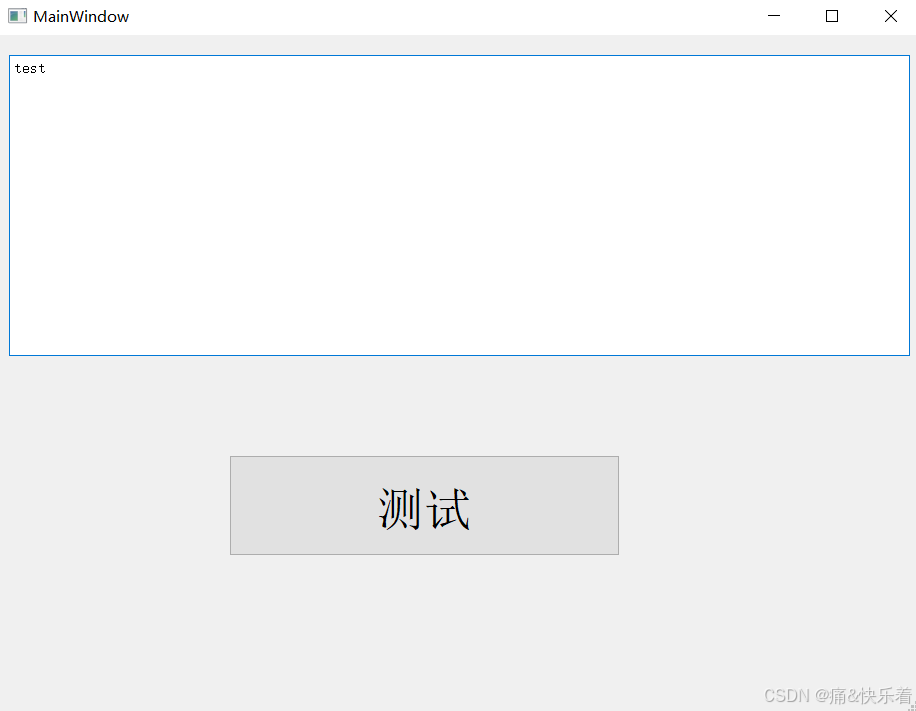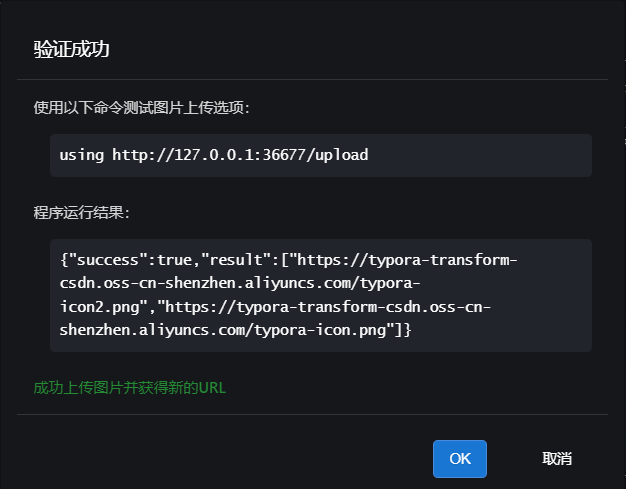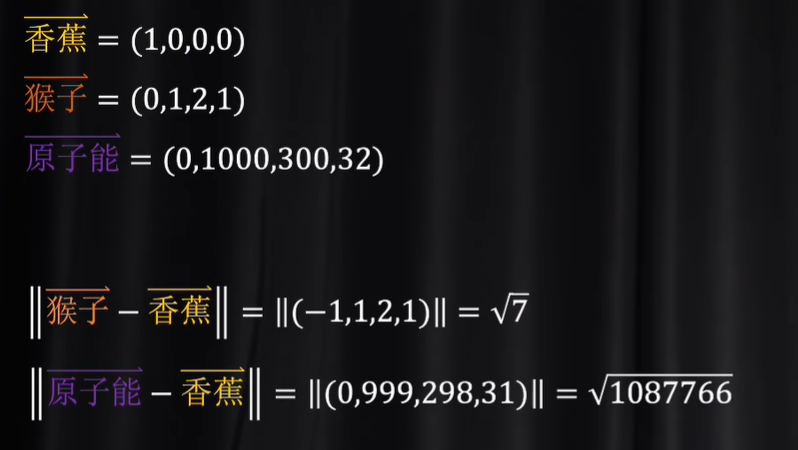描述 184.部门工资最高的员工
表:
Employee+--------------+---------+ | 列名 | 类型 | +--------------+---------+ | id | int | | name | varchar | | salary | int | | departmentId | int | +--------------+---------+ 在 SQL 中,id是此表的主键。 departmentId 是 Department 表中 id 的外键(在 Pandas 中称为 join key)。 此表的每一行都表示员工的 id、姓名和工资。它还包含他们所在部门的 id。表:
Department+-------------+---------+ | 列名 | 类型 | +-------------+---------+ | id | int | | name | varchar | +-------------+---------+ 在 SQL 中,id 是此表的主键列。 此表的每一行都表示一个部门的 id 及其名称。查找出每个部门中薪资最高的员工。
按 任意顺序 返回结果表。
查询结果格式如下例所示。示例 1:
输入: Employee 表: +----+-------+--------+--------------+ | id | name | salary | departmentId | +----+-------+--------+--------------+ | 1 | Joe | 70000 | 1 | | 2 | Jim | 90000 | 1 | | 3 | Henry | 80000 | 2 | | 4 | Sam | 60000 | 2 | | 5 | Max | 90000 | 1 | +----+-------+--------+--------------+ Department 表: +----+-------+ | id | name | +----+-------+ | 1 | IT | | 2 | Sales | +----+-------+ 输出: +------------+----------+--------+ | Department | Employee | Salary | +------------+----------+--------+ | IT | Jim | 90000 | | Sales | Henry | 80000 | | IT | Max | 90000 | +------------+----------+--------+ 解释:Max 和 Jim 在 IT 部门的工资都是最高的,Henry 在销售部的工资最高
数据准备
Create table If Not Exists Employee (id int, name varchar(255), salary int, departmentId int)
Create table If Not Exists Department (id int, name varchar(255))
Truncate table Employee
insert into Employee (id, name, salary, departmentId) values ('1', 'Joe', '70000', '1')
insert into Employee (id, name, salary, departmentId) values ('2', 'Jim', '90000', '1')
insert into Employee (id, name, salary, departmentId) values ('3', 'Henry', '80000', '2')
insert into Employee (id, name, salary, departmentId) values ('4', 'Sam', '60000', '2')
insert into Employee (id, name, salary, departmentId) values ('5', 'Max', '90000', '1')
Truncate table Department
insert into Department (id, name) values ('1', 'IT')
insert into Department (id, name) values ('2', 'Sales')分析
①首先根据部门分组 根据工资降序排名
select Department.name, Employee.name Employee, salary Salary, rank() over (partition by departmentId order by salary desc) r1 from employee join department on Employee.departmentId = department.id
②然后取排名为1 的 因为可能有并列所以用rank开窗函数 或者dense_rank
select name Department, Employee, Salary from t1 where r1 = 1
代码
with t1 as (select Department.name,
Employee.name Employee,
salary Salary,
rank() over (partition by departmentId order by salary desc) r1
from employee
join department on Employee.departmentId = department.id)
select name Department, Employee, Salary
from t1
where r1 = 1;描述 1549.每件商品额最新订单
表:
Customers+---------------+---------+ | Column Name | Type | +---------------+---------+ | customer_id | int | | name | varchar | +---------------+---------+ customer_id 是该表主键. 该表包含消费者的信息.表:
Orders+---------------+---------+ | Column Name | Type | +---------------+---------+ | order_id | int | | order_date | date | | customer_id | int | | product_id | int | +---------------+---------+ order_id 是该表主键. 该表包含消费者customer_id产生的订单. 不会有商品被相同的用户在一天内下单超过一次.表:
Products+---------------+---------+ | Column Name | Type | +---------------+---------+ | product_id | int | | product_name | varchar | | price | int | +---------------+---------+ product_id 是该表主键. 该表包含所有商品的信息.写一个解决方案, 找到每件商品的最新订单(可能有多个).
返回的结果以
product_name升序排列, 如果有排序相同, 再以product_id升序排列. 如果还有排序相同, 再以order_id升序排列.查询结果格式如下例所示。
示例 1:
输入:Customers表:+-------------+-----------+ | customer_id | name | +-------------+-----------+ | 1 | Winston | | 2 | Jonathan | | 3 | Annabelle | | 4 | Marwan | | 5 | Khaled | +-------------+-----------+Orders表:+----------+------------+-------------+------------+ | order_id | order_date | customer_id | product_id | +----------+------------+-------------+------------+ | 1 | 2020-07-31 | 1 | 1 | | 2 | 2020-07-30 | 2 | 2 | | 3 | 2020-08-29 | 3 | 3 | | 4 | 2020-07-29 | 4 | 1 | | 5 | 2020-06-10 | 1 | 2 | | 6 | 2020-08-01 | 2 | 1 | | 7 | 2020-08-01 | 3 | 1 | | 8 | 2020-08-03 | 1 | 2 | | 9 | 2020-08-07 | 2 | 3 | | 10 | 2020-07-15 | 1 | 2 | +----------+------------+-------------+------------+Products表:+------------+--------------+-------+ | product_id | product_name | price | +------------+--------------+-------+ | 1 | keyboard | 120 | | 2 | mouse | 80 | | 3 | screen | 600 | | 4 | hard disk | 450 | +------------+--------------+-------+ 输出: +--------------+------------+----------+------------+ | product_name | product_id | order_id | order_date | +--------------+------------+----------+------------+ | keyboard | 1 | 6 | 2020-08-01 | | keyboard | 1 | 7 | 2020-08-01 | | mouse | 2 | 8 | 2020-08-03 | | screen | 3 | 3 | 2020-08-29 | +--------------+------------+----------+------------+ 解释: keyboard 的最新订单在2020-08-01, 在这天有两次下单. mouse 的最新订单在2020-08-03, 在这天只有一次下单. screen 的最新订单在2020-08-29, 在这天只有一次下单. hard disk 没有被下单, 我们不把它包含在结果表中.
数据准备
Create table If Not Exists Customers (customer_id int, name varchar(10))
Create table If Not Exists Orders (order_id int, order_date date, customer_id int, product_id int)
Create table If Not Exists Products (product_id int, product_name varchar(20), price int)
Truncate table Customers
insert into Customers (customer_id, name) values ('1', 'Winston')
insert into Customers (customer_id, name) values ('2', 'Jonathan')
insert into Customers (customer_id, name) values ('3', 'Annabelle')
insert into Customers (customer_id, name) values ('4', 'Marwan')
insert into Customers (customer_id, name) values ('5', 'Khaled')
Truncate table Orders
insert into Orders (order_id, order_date, customer_id, product_id) values ('1', '2020-07-31', '1', '1')
insert into Orders (order_id, order_date, customer_id, product_id) values ('2', '2020-7-30', '2', '2')
insert into Orders (order_id, order_date, customer_id, product_id) values ('3', '2020-08-29', '3', '3')
insert into Orders (order_id, order_date, customer_id, product_id) values ('4', '2020-07-29', '4', '1')
insert into Orders (order_id, order_date, customer_id, product_id) values ('5', '2020-06-10', '1', '2')
insert into Orders (order_id, order_date, customer_id, product_id) values ('6', '2020-08-01', '2', '1')
insert into Orders (order_id, order_date, customer_id, product_id) values ('7', '2020-08-01', '3', '1')
insert into Orders (order_id, order_date, customer_id, product_id) values ('8', '2020-08-03', '1', '2')
insert into Orders (order_id, order_date, customer_id, product_id) values ('9', '2020-08-07', '2', '3')
insert into Orders (order_id, order_date, customer_id, product_id) values ('10', '2020-07-15', '1', '2')
Truncate table Products
insert into Products (product_id, product_name, price) values ('1', 'keyboard', '120')
insert into Products (product_id, product_name, price) values ('2', 'mouse', '80')
insert into Products (product_id, product_name, price) values ('3', 'screen', '600')
insert into Products (product_id, product_name, price) values ('4', 'hard disk', '450')分析
①首先通过product_id将两张表连接起来 同时用rank窗口函数 根据商品分组根据订单日期降序排名 排名越靠前说明是最新日期
select products.product_id, product_name, order_id, order_date, rank() over (partition by product_id order by order_date desc) r1 from products join orders on products.product_id = orders.product_id
② 然后 取排名为1 的 按题目要求排序
select product_name, product_id, order_id, order_date from t1 where r1 = 1 order by product_name, product_id, order_id
代
with t1 as (select products.product_id,
product_name,
order_id,
order_date,
rank() over (partition by product_id order by order_date desc) r1
from products
join orders on products.product_id = orders.product_id)
select product_name, product_id, order_id, order_date
from t1
where r1 = 1
order by product_name, product_id, order_id描述 1532. 最近的三笔订单
表:
Customers+---------------+---------+ | Column Name | Type | +---------------+---------+ | customer_id | int | | name | varchar | +---------------+---------+ customer_id 是该表具有唯一值的列 该表包含消费者的信息表:
Orders+---------------+---------+ | Column Name | Type | +---------------+---------+ | order_id | int | | order_date | date | | customer_id | int | | cost | int | +---------------+---------+ order_id 是该表具有唯一值的列 该表包含 id 为 customer_id 的消费者的订单信息 每一个消费者 每天一笔订单写一个解决方案,找到每个用户的最近三笔订单。如果用户的订单少于 3 笔,则返回他的全部订单。
返回的结果按照
customer_name升序 排列。如果有相同的排名,则按照customer_id升序 排列。如果排名还有相同,则按照order_date降序 排列。结果格式如下例所示:
示例 1:
输入:Customers+-------------+-----------+ | customer_id | name | +-------------+-----------+ | 1 | Winston | | 2 | Jonathan | | 3 | Annabelle | | 4 | Marwan | | 5 | Khaled | +-------------+-----------+Orders+----------+------------+-------------+------+ | order_id | order_date | customer_id | cost | +----------+------------+-------------+------+ | 1 | 2020-07-31 | 1 | 30 | | 2 | 2020-07-30 | 2 | 40 | | 3 | 2020-07-31 | 3 | 70 | | 4 | 2020-07-29 | 4 | 100 | | 5 | 2020-06-10 | 1 | 1010 | | 6 | 2020-08-01 | 2 | 102 | | 7 | 2020-08-01 | 3 | 111 | | 8 | 2020-08-03 | 1 | 99 | | 9 | 2020-08-07 | 2 | 32 | | 10 | 2020-07-15 | 1 | 2 | +----------+------------+-------------+------+ 输出: +---------------+-------------+----------+------------+ | customer_name | customer_id | order_id | order_date | +---------------+-------------+----------+------------+ | Annabelle | 3 | 7 | 2020-08-01 | | Annabelle | 3 | 3 | 2020-07-31 | | Jonathan | 2 | 9 | 2020-08-07 | | Jonathan | 2 | 6 | 2020-08-01 | | Jonathan | 2 | 2 | 2020-07-30 | | Marwan | 4 | 4 | 2020-07-29 | | Winston | 1 | 8 | 2020-08-03 | | Winston | 1 | 1 | 2020-07-31 | | Winston | 1 | 10 | 2020-07-15 | +---------------+-------------+----------+------------+ 解释: Winston 有 4 笔订单, 排除了 "2020-06-10" 的订单, 因为它是最老的订单。 Annabelle 只有 2 笔订单, 全部返回。 Jonathan 恰好有 3 笔订单。 Marwan 只有 1 笔订单。 结果表我们按照 customer_name 升序排列,customer_id 升序排列,order_date 降序排列。
数据准备
Create table If Not Exists Customers (customer_id int, name varchar(10))
Create table If Not Exists Orders (order_id int, order_date date, customer_id int, cost int)
Truncate table Customers
insert into Customers (customer_id, name) values ('1', 'Winston')
insert into Customers (customer_id, name) values ('2', 'Jonathan')
insert into Customers (customer_id, name) values ('3', 'Annabelle')
insert into Customers (customer_id, name) values ('4', 'Marwan')
insert into Customers (customer_id, name) values ('5', 'Khaled')
Truncate table Orders
insert into Orders (order_id, order_date, customer_id, cost) values ('1', '2020-07-31', '1', '30')
insert into Orders (order_id, order_date, customer_id, cost) values ('2', '2020-7-30', '2', '40')
insert into Orders (order_id, order_date, customer_id, cost) values ('3', '2020-07-31', '3', '70')
insert into Orders (order_id, order_date, customer_id, cost) values ('4', '2020-07-29', '4', '100')
insert into Orders (order_id, order_date, customer_id, cost) values ('5', '2020-06-10', '1', '1010')
insert into Orders (order_id, order_date, customer_id, cost) values ('6', '2020-08-01', '2', '102')
insert into Orders (order_id, order_date, customer_id, cost) values ('7', '2020-08-01', '3', '111')
insert into Orders (order_id, order_date, customer_id, cost) values ('8', '2020-08-03', '1', '99')
insert into Orders (order_id, order_date, customer_id, cost) values ('9', '2020-08-07', '2', '32')
insert into Orders (order_id, order_date, customer_id, cost) values ('10', '2020-07-15', '1', '2')分析
①首先通过customer_id 将两张表连接起来 同时根据顾客分组 日期降序排名
select name, C.customer_id, order_id, order_date, rank() over (partition by customer_id order by order_date desc) r1 from Orders join Customers C on Orders.customer_id = C.customer_id
② 然后取前三名 根据题目排序顺序
select name customer_name, customer_id, order_id, order_date from t1 where r1 <= 3 order by customer_name, customer_id, order_date desc
代码
with t1 as (select name,
C.customer_id,
order_id,
order_date,
rank() over (partition by customer_id order by order_date desc) r1
from Orders
join Customers C on Orders.customer_id = C.customer_id)
select name customer_name, customer_id, order_id, order_date
from t1
where r1 <= 3
order by customer_name, customer_id, order_date desc;描述 1831.每天的最大交易
表:
Transactions+----------------+----------+ | Column Name | Type | +----------------+----------+ | transaction_id | int | | day | datetime | | amount | int | +----------------+----------+ transaction_id 是该表具有唯一值的列。 每行包括了该次交易的信息。编写一个解决方案,报告每天交易金额
amount最大 的交易 ID 。如果一天中有多个这样的交易,返回这些交易的 ID 。返回结果根据
transaction_id升序排列。返回格式如下示例所示:
示例 1:
输入: Transactions table: +----------------+--------------------+--------+ | transaction_id | day | amount | +----------------+--------------------+--------+ | 8 | 2021-4-3 15:57:28 | 57 | | 9 | 2021-4-28 08:47:25 | 21 | | 1 | 2021-4-29 13:28:30 | 58 | | 5 | 2021-4-28 16:39:59 | 40 | | 6 | 2021-4-29 23:39:28 | 58 | +----------------+--------------------+--------+ 输出: +----------------+ | transaction_id | +----------------+ | 1 | | 5 | | 6 | | 8 | +----------------+ 解释: "2021-4-3" --> 有一个 id 是 8 的交易,因此,把它加入结果表。 "2021-4-28" --> 有两个交易,id 是 5 和 9 ,交易 5 的金额是 40 ,而交易 9 的数量是 21 。只需要将交易 5 加入结果表,因为它是当天金额最大的交易。 "2021-4-29" --> 有两个交易,id 是 1 和 6 ,这两个交易的金额都是 58 ,因此需要把它们都写入结果表。 最后,把交易 id 按照升序排列。
数据准备
Create table If Not Exists Transactions (transaction_id int, day date, amount int)
Truncate table Transactions
insert into Transactions (transaction_id, day, amount) values ('8', '2021-4-3 15:57:28', '57')
insert into Transactions (transaction_id, day, amount) values ('9', '2021-4-28 08:47:25', '21')
insert into Transactions (transaction_id, day, amount) values ('1', '2021-4-29 13:28:30', '58')
insert into Transactions (transaction_id, day, amount) values ('5', '2021-4-28 16:39:59', '40')
insert into Transactions (transaction_id, day, amount) values ('6', '2021-4-29 23:39:28', '58')分析
①首先根据日期分组 金额降序排名 (还可以用max函数)
select transaction_id, day, rank() over (partition by day order by amount desc) r1 from Transactions
② 然后取排名为1 的 根据题目要求排序
select transaction_id from t1 where r1 = 1 order by transaction_id;
代码
with t1 as (select transaction_id, day, rank() over (partition by day order by amount desc) r1
from Transactions)
select transaction_id
from t1
where r1 = 1
order by transaction_id;总结
求最近几天 或者top N 优先考虑排名窗口函数
区别:
rank --------> 1,1,3,4
row_number -------->1,2,3,4
dense_rank --------> 1,1,2,3























